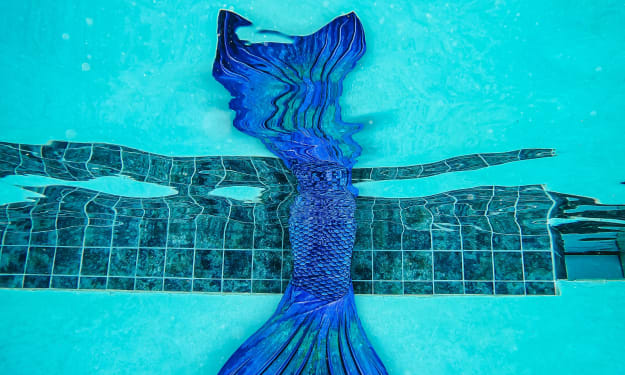What is the Breeding Process of Mermaids?
Breeding Process of Mermaids?

Mermaids, with their captivating blend of human and aquatic features, have captivated storytellers for centuries. However, unlike their real-world aquatic counterparts, the question of how mermaids reproduce remains shrouded in mystery. Since these creatures exist solely in myth and legend, there's no scientific data to provide a definitive answer. But by delving into mermaid folklore, exploring real-world marine biology, and considering the challenges of their unique physiology, we can paint a picture of some intriguing possibilities.
The Whispers of Folklore: Clues from Mermaid Myths
Across cultures, mermaid myths offer glimpses into how different societies envisioned these aquatic beings and their potential breeding habits. Here are some key perspectives:
Mirroring Reality: Many European tales depict mermaids as solitary creatures or existing in small groups with families. If they reproduce, it's often assumed their offspring are merfolk as well. The Hans Christian Andersen story "The Little Mermaid" exemplifies this, where the mermaid remains a mermaid even after yearning for a human life.
Transformation and Duality: Some Southeast Asian legends suggest mermaids can transform into humans on land and potentially reproduce with humans. Their offspring might be entirely human, merfolk, or a blend of both. This concept delves into the duality of their nature and the possibility of interbreeding between land and sea.
Asexual Enchantment: Some myths, particularly those surrounding sirens, focus more on the seductive nature of mermaids and their mesmerizing songs. These tales often don't depict reproduction, suggesting a focus on luring sailors rather than continuing their own lineage.
Echoes of the Ocean: Insights from Marine Biology
While mermaids are mythical, they likely drew inspiration from real-world creatures. Examining the reproductive patterns of marine mammals with some mermaid-like features can offer clues:
Whales and Dolphins: These highly intelligent mammals give birth to live young underwater and nurse them. Their social structures and complex communication styles could have influenced the concept of mermaids with families, complex societies, and potentially similar birthing processes adapted for an aquatic environment.
Seals and Sea Lions: These semi-aquatic mammals spend time both on land and in the water, giving birth on beaches. The amphibious nature of these creatures might have sparked ideas of mermaid societies existing in underwater cities or utilizing specific locations for birthing.
Dugongs and Manatees: These gentle giants are herbivores with a vaguely humanoid appearance. They give birth to single calves and exhibit strong parental care. Their peaceful demeanor could have contributed to the image of mermaids nurturing their young.
Biological Challenges: Bridging the Gap Between Myth and Reality
Even if we imagine mermaids as a real species, some significant biological hurdles would need to be overcome for them to reproduce successfully:
Habitat Limitations: Giving birth underwater could be challenging for creatures with lungs, similar to humans. Would they have specialized adaptations for underwater delivery, or would they require a land-based birthing process, perhaps in hidden coves or underwater caves?
Physiology: The traditional mermaid form with a human torso and fishtail presents an issue for internal gestation and childbirth. The mermaid body would need significant adaptations to support a growing fetus, potentially including an internal structure resembling a womb or a pouch for external development of the young.
Population Dynamics: The scarcity of mermaid sightings in folklore could suggest a small population size. This raises questions about breeding frequency, the risks of inbreeding, and the challenges of ensuring the species' survival.
Modern Interpretations: Expanding the Mythological Canvas
Contemporary stories and artists offer fresh perspectives on mermaid reproduction, pushing the boundaries of the myth:
Asexual Reproduction: Perhaps mermaids wouldn't need a partner to reproduce. Stories might explore parthenogenesis, allowing merfolk populations to thrive even without a large number of individuals.
Symbiotic Relationships: Some writers delve into the idea of mermaids partnering with other aquatic creatures like dolphins or even fish for reproduction. This could create fascinating hybrid offspring or rely on other species for parental care.
Technological Advancements: In science fiction settings, mermaids might have developed technology to overcome biological limitations. Imagine underwater birthing chambers or even the ability to temporarily transform into a fully human form for birthing purposes.
The Enduring Mystery: More Than Just Biology
The question of mermaid reproduction remains an open-ended puzzle. It's fueled by the very nature of these mythical beings – their ability to exist at the intersection of imagination and the natural world. They allow us to explore possibilities beyond the limitations of the known world. Whether they reproduce in a way that mirrors humans, marine mammals, or something entirely unique, the mystery itself holds immense creative power.
About the Creator
Moharif Yulianto
a freelance writer and thesis preparation in his country, youtube content creator, facebook
Enjoyed the story? Support the Creator.
Subscribe for free to receive all their stories in your feed. You could also pledge your support or give them a one-off tip, letting them know you appreciate their work.






Comments
There are no comments for this story
Be the first to respond and start the conversation.